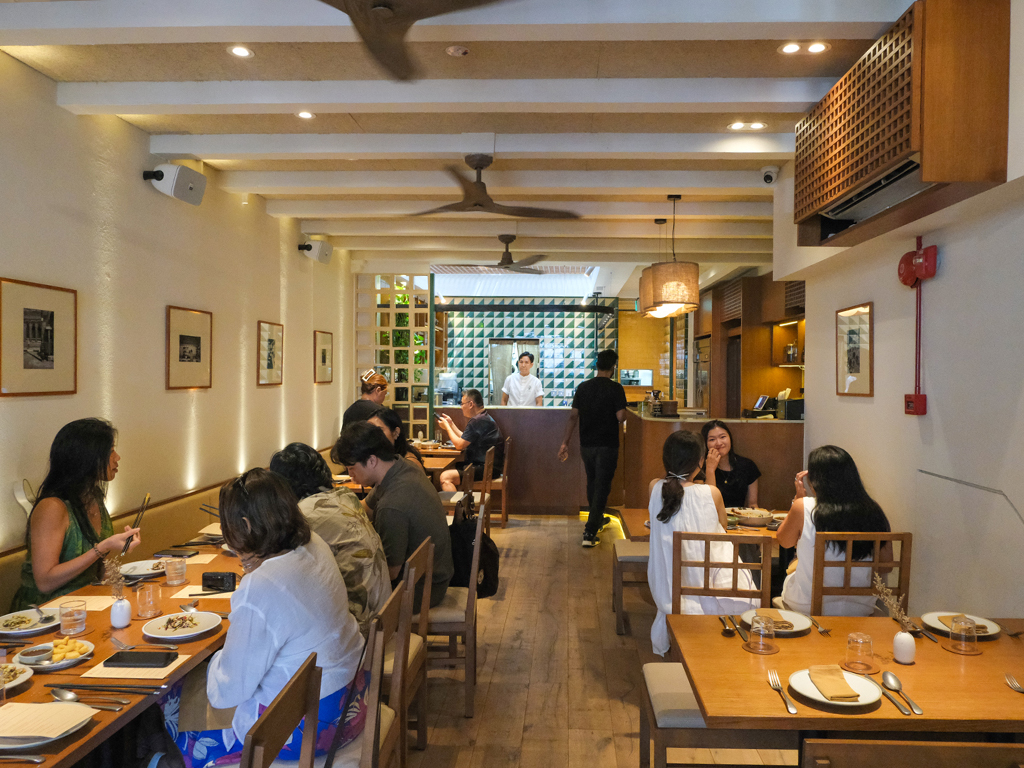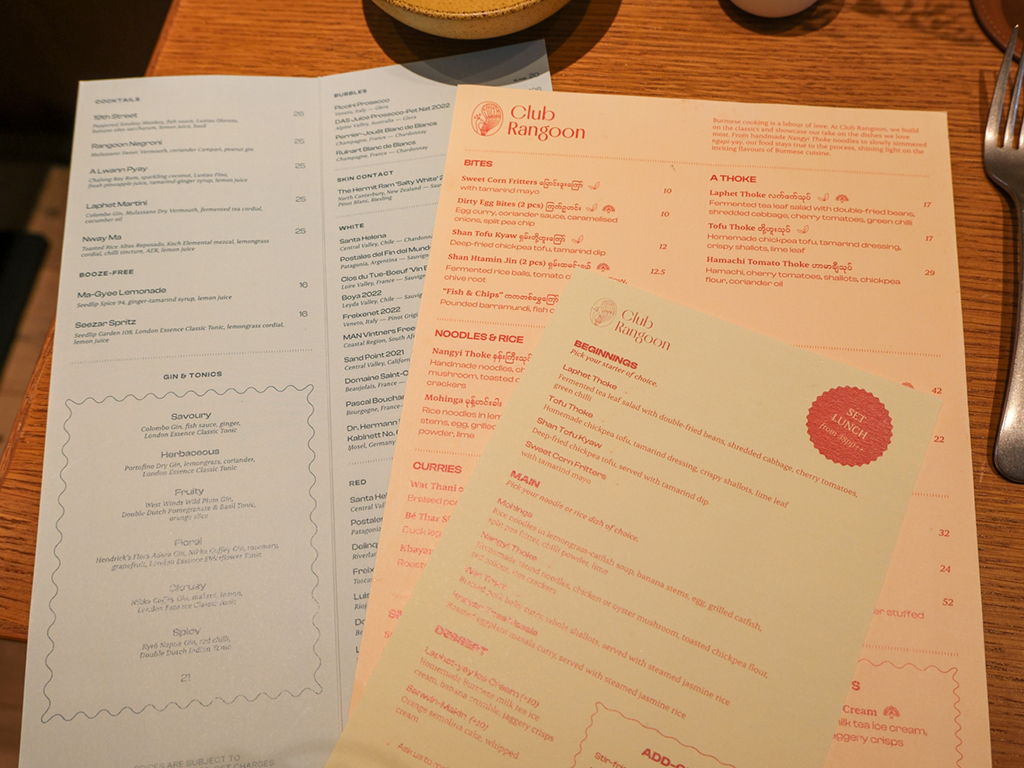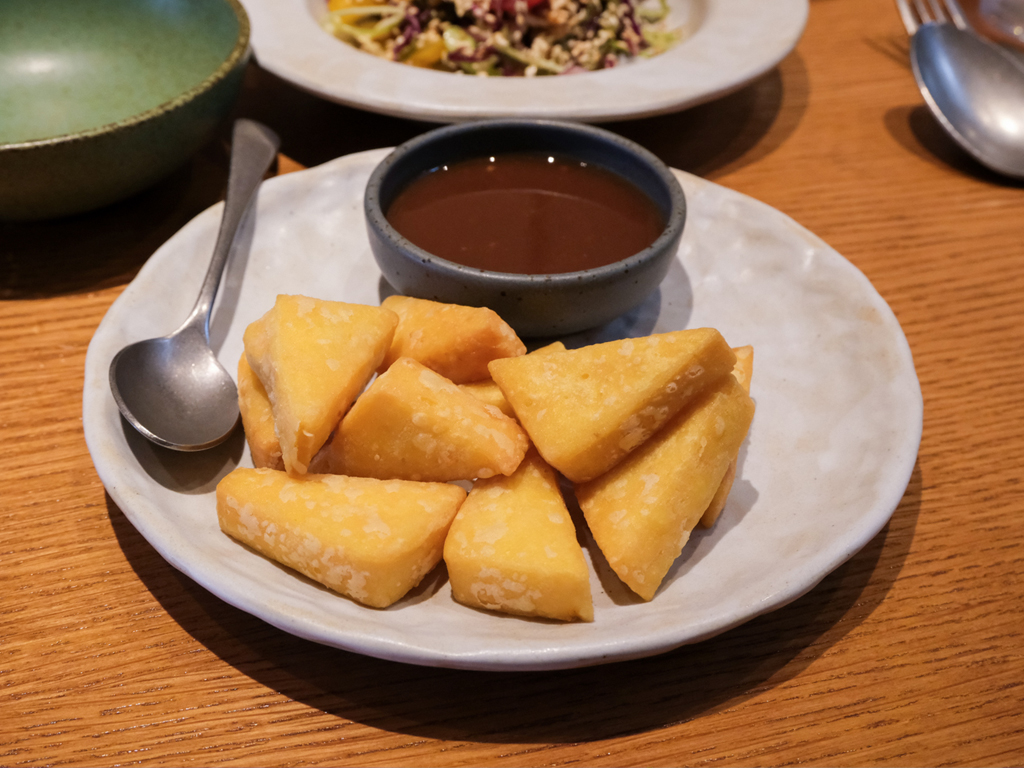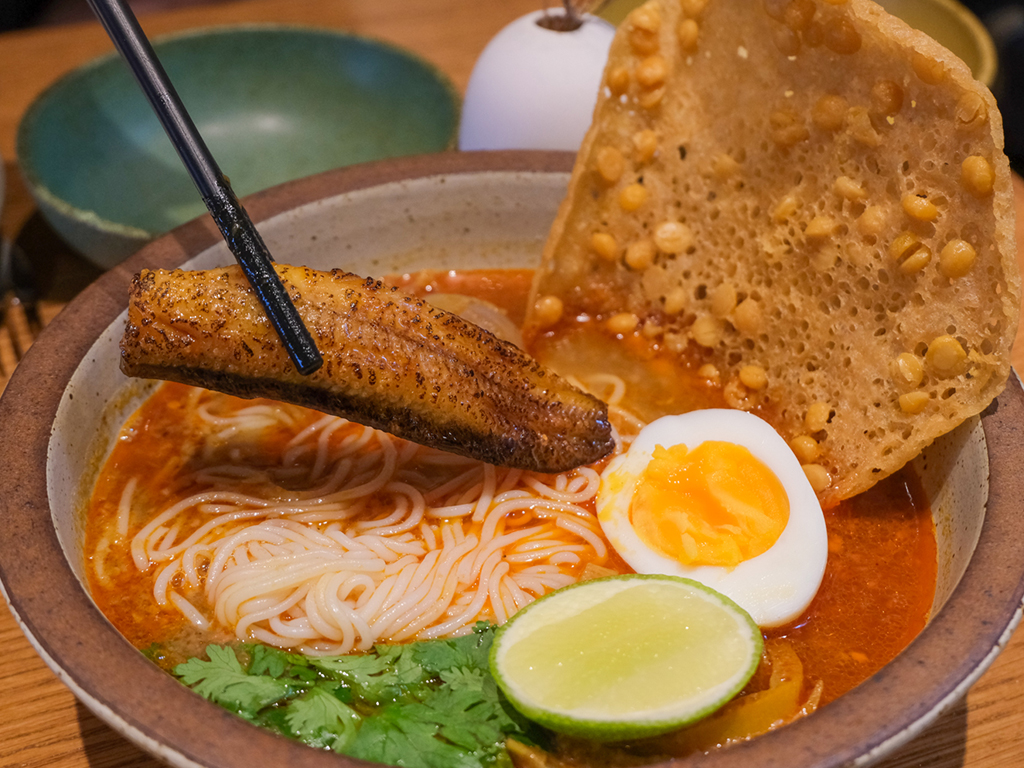Review: Club Rangoon delights with upscale Burmese dishes without skimping on soul
- Club Rangoon on Duxton Hill is Singapore’s first modern Burmese restaurant
- Expect a fresh take on Burmese cuisine by chef Charrinn “Noom” Singdaechakarn, based on co-founder Nelson Htoo’s family recipes
- Dishes we recommend include the flavour-packed mohinga, zesty laphet thoke, and braised pork belly curry
Singapore might be a culinary kaleidoscope, but there’s one corner of Asia that hasn’t really found a place on our plates — I’m talking about Burmese food.
It’s been a quiet, understated presence that struggles to spread beyond the confines of Peninsula Plaza and its immediate surroundings. Yet, within the compound, it thrives in humble eateries tucked between money changers and travel agents frequented by the 300,000 Myanmar nationals living here.
It’s there where, in preparation for my first trip to Myanmar some eight years back, I had my first bowl of mohinga — a sort of Burmese fish noodle soup — served with no fanfare but plenty of soul.
However, one restaurant wants to take Burmese cuisine out of the shadows and into the limelight, and that restaurant is none other than Club Rangoon.
The backstory

Club Rangoon on Duxton Road, is a sleek, contemporary ode to Burmese flavours.
It was co-founded by Nelson Htoo and his partner Elin Fu under their Hong Kong-based hospitality group, Common Abode, and opened in August this year.
Its first-floor shophouse spot is an intimate, light-filled space where you’ll surely pay double or triple to eat a S$17 tea leaf salad and a S$34 catfish soup, but such is the price of upscale Asian food nowadays. (Yes, I’m talking about you, Hayop and Revolver.)
Its inspiration for the space? The Burmese teahouse, a community watering hole packed with locals drinking super sweet tea and chomping down on fried pastries, and its menu is filled with family recipes that Nelson grew up with.
It’s worth noting that Club Rangoon first had a presence in Hong Kong, where it opened in 2020, before it closed earlier this year when the couple brought the brand over to Singapore.

Nelson collaborates closely with Thai chef Charrinn “Noom” Singdaechakarn, who has had extensive experience in southeast Asian cuisine, from family-run restaurants in Thailand and fast-casual eateries in Sydney, to kitchens in Hong Kong.
Our verdict

Burmese cooking is a labour of love, and you get a glimpse of that at Club Rangoon, from the perfectly-fried tofu fritters to the pungent ngapi-yay (boiled fish paste) that could only have been achieved with a slow simmer.
The presentation is thoughtful, the service is warm, and the experience feels both sophisticated and approachable, and did we mention its Burmese-inspired cocktails also use ingredients such as fish sauce and chilli tincture?
Club Rangoon makes a great case for why Burmese cuisine deserves a seat at Singapore’s ever-expanding dining table.
You’ll probably want to come in a group to try the various dishes though — while the prices are somewhat justifiable given the setting and quality, it makes me wistful for the more affordable plates at Peninsula Plaza.
However if you can’t rustle up a crowd, the lunch sets, which go for S$34 per person for one starter and main, are a great way to explore this underrepresented cuisine without breaking the bank. These are only available, however, on Fridays and Saturdays.
What it’s good for
Ah, laphet thoke (S$17), the quintessential Burmese salad with fermented tea leaves, crunchy peanuts and a zesty lime dressing — it sounds simple enough, but is really a riot of flavours and textures.

Club Rangoon’s version takes it to the next level with premium tea leaves from the popular Burmese brand Sein Palaung, which have a deep umami quality. The leaves are tossed with a tangy, refreshing mix of radicchio, cabbage and tomatoes, then topped with fried broad beans, garlic chips and toasted sesame for extra crunch.
What a standout, umami-packed appetiser that’s sure to whet your appetite for the sumptuous meal ahead.

The shan tofu kyaw (S$12 for a la carte) is a characteristically Burmese tofu fritter that’s crispy on the outside, creamy and jelly-like on the inside — I mean, will you look at these beautiful golden pillows?
Despite its name, these are made completely with chickpea flour, rather than soybeans, in a similar way how polenta is made. It’s served with a tangy tamarind dip that kept us reaching for more. I could easily eat two plates of this, alone.

Much of Burmese food is unapologetically sour, salty, and spicy, and it’s best exemplified in their national dish, the mohinga (S$34).
At Club Rangoon, rich, aromatic lemongrass-infused catfish broth is ladled over rice noodles. For garnish, you get half a boiled egg, pearl onions, crunchy banana stems, and a standout split pea fritter.
Everything came together, slicked with the brightly spiced lemongrass and catfish broth that thickened as I tossed them together — it’s comfort food at its finest.

Just as how we have belecan (fermented shrimp paste), the Burmese have a fermented catfish paste known as “ngapi”.
Club Rangoon takes the paste further with the ngapi-yay toh-zayar (S$14), a pungent, savoury, and very spicy dip made with toasted dried shrimp, chillies, and shallots served with fresh vegetables from the market — during my visit, we got star fruit, cucumber, red radish, and lettuce leaves.

The wat thani (S$34) is a beautifully-presented plate of pork belly that’s been simmered in a fragrant curry spiced with turmeric, ginger, and garlic. The thing about Burmese curries is that they’re not spicy in a hot way, instead they are deeply flavourful and sweet, like with this dish.
The pork is a bit less fatty and less tender than the Chinese braised pork belly dishes I’m used to, but it somehow works with the indulgent curry. All of this pairs beautifully with a bowl of steamed jasmine rice (S$5).

On the beverage list, you’ll see a considerable amount of cocktails, gin and tonic cocktails (or G&Ts), and wines from S$16.
It’s the cocktails and G&Ts that are more interesting, featuring ingredients such as fish sauce, ginger, and red chillies.
One such signature concoction is the nway ma (S$25), a mezcal sour of sorts featuring a toasted rice-infused Altos Reposado and Koch Elemental mezcal — the smokiness is tightened up with a bright savoury and spicy quality from lemongrass cordial and chilli tincture lingering with each sip.
Don’t drink? You can order teas, coffees, and soft drinks as well.

If you have to choose only one dessert, make it the laphet-yay ice cream (S$15). Its flavour is gorgeously nuanced, creamy and faintly tannic like an incredible Thai milk tea, only not as bitter.
The only letdown is how quickly it melts — we had to eat this really quickly before it turned into a watery mess (which we continued to scoop up with a spoon anyway because it’s that good).
Around it, banana crumble is scattered for texture, while a piece of jaggery crisp sits on top, adding a crackle of sweetness that might transport you to a Burmese teahouse, where sweets like these are commonly snacked on with tea.

And then there’s the sanwin-makin (S$14), which is also very good. This is a bright rectangle wedge of orange semolina cake crowned with orange pieces that’ve been charred on the edges for a hint of smokiness.
The soft richness of the cake is held in check by light citrus notes, each mouthful balanced with sweetness and nuttiness. On the side, there’s a neat pool of whipped cream and a scattering of pistachio crumbs for good measure, but it’s just as good without.
What it could improve on

The pazun kin (S$32), or grilled river prawns slapped with dry curry on top, is disappointing at best, and a waste of money at worst.
The curry paste, spicy, mildly sweet and savoury, and not unlike a classic Singapore sambal, is okay, but it hardly saves the sad excuse of a river prawn, where beneath the impressive-looking charred shell hides little meat that is too soft and almost mushy.
It’s a hard skip for us, and we’d probably try its other seafood options, such as its ngar kin (grilled red snapper stuffed with lemongrass and green chillies), when we return next.
Our quick takes
Is it conducive to conversation? Mostly yes, though it’s a relatively small restaurant and the tables are packed closely together.
Is a reservation necessary? Good to have, especially for dinners and weekends.
How to get there? Club Rangoon is a 3- and 6-minute walk from Maxwell MRT Station Exit 3 and Tanjong Pagar MRT Station Exit A respectively.
HungryGoWhere paid for its meal at this restaurant for this review.
Club Rangoon
76 Duxton Road
Nearest MRT: Maxwell, Tanjong Pagar
Open: Tuesday to Thursday (5.30pm to 10.30pm), Friday to Saturday (11.30am to 3pm, 5.30pm to 11.30pm)
76 Duxton Road
Nearest MRT: Maxwell, Tanjong Pagar
Open: Tuesday to Thursday (5.30pm to 10.30pm), Friday to Saturday (11.30am to 3pm, 5.30pm to 11.30pm)



